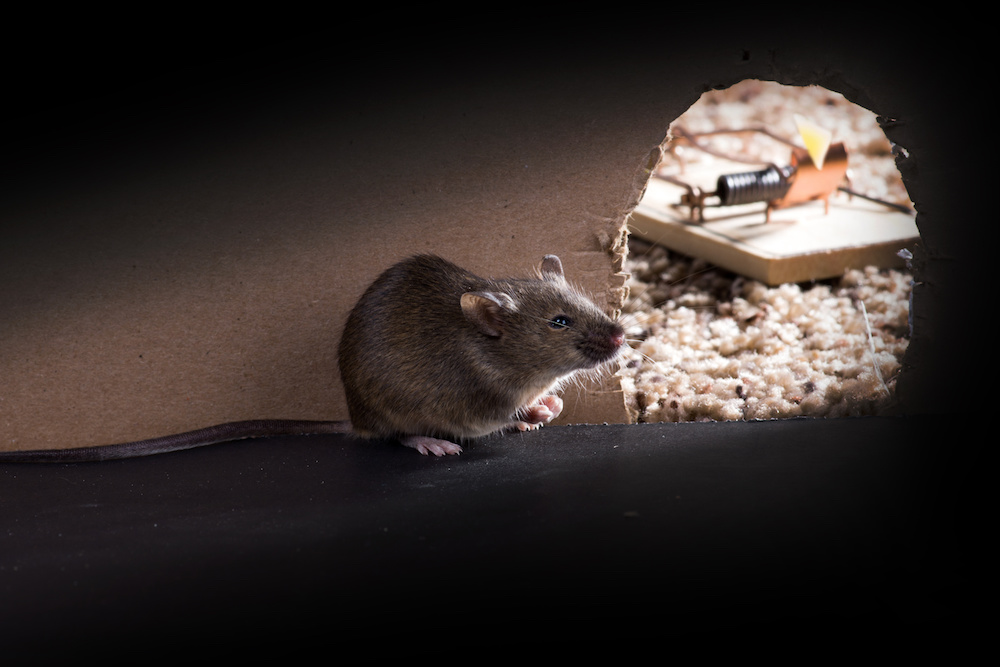Step-by-Step Rodent Proofing Guide for a Pest-Free Home
Share
Are you tired of sharing your living space with unwelcome guests like mice and rats? With our step-by-step rodent proofing guide, you can take control of your home and keep these pesky invaders at bay. Whether you're dealing with a minor nuisance or a full-scale infestation, this guide will help you implement effective strategies to ensure your home remains rodent-free.

Why Rodent Proofing is Essential
Rodents are more than just a nuisance; they pose significant health risks and can cause extensive damage to your property. Mice and rats are known carriers of diseases such as Hantavirus, Leptospirosis, and Salmonella. Additionally, their gnawing habits can lead to structural damage, electrical fires, and ruined belongings. Therefore, rodent proofing your home is not just beneficial, it's essential.
Identifying Signs of Rodent Infestation
Before you can effectively rodent-proof your home, it's crucial to identify signs of infestation. Look for droppings, gnaw marks, nests, and grease trails along walls. Unusual pet behavior, such as dogs or cats acting alert or agitated, may also indicate the presence of rodents. If you suspect an infestation, it's important to act quickly.
Conducting a Thorough Inspection
Begin your rodent proofing journey by conducting a thorough inspection of your property. Check for any potential entry points such as gaps in walls, broken vents, and damaged pipes. Mice can squeeze through openings as small as a dime, so be meticulous in your search. Seal any gaps with steel wool or caulk to prevent entry.
Sealing Entry Points
Once you've identified possible entry points, it's time to seal them. Pay special attention to areas around windows, doors, and the foundation of your home. Use metal mesh, hardware cloth, or caulk to close off these openings. Remember, even the smallest gap can serve as an invitation for rodents.
Installing Door Sweeps
Install door sweeps on exterior doors to eliminate gaps between the door and the floor. This simple addition can effectively block rodents from entering your home. Regularly check the condition of your door sweeps and replace them as needed.
Maintaining Cleanliness
Rodents are attracted to food and shelter, so maintaining cleanliness is key to repelling them. Store food in airtight containers and promptly clean up spills and crumbs. Regularly dispose of garbage and ensure your trash cans have tight-fitting lids.
Reducing Clutter
Clutter provides hiding spots for rodents, so it's essential to keep your home organized. Regularly declutter areas like basements, attics, and garages. Look for opportunities to donate, recycle, or discard items you no longer need.
Using Natural Repellents
Natural repellents can be an effective way to deter rodents without resorting to harsh chemicals. Consider using peppermint oil, which rodents find unpleasant. Simply soak cotton balls in peppermint oil and place them in areas prone to rodent activity. For more natural repellent ideas, check out this comprehensive guide.
Exploring DIY Solutions
DIY solutions can be a cost-effective way to manage rodent problems. From homemade traps to natural deterrents, there are numerous options available. To learn more about DIY versus professional rodent control, visit this article.
Professional Help and Resources
If your rodent problem persists despite your best efforts, it might be time to seek professional help. Pest control experts have the knowledge and tools needed to tackle even the most stubborn infestations. For insights into humane rodent control methods, explore this informative piece.
Understanding Different Control Methods
It's important to understand the pros and cons of various rodent control methods. From traditional traps to ultrasonic repellents, each approach has its advantages and limitations. Discover more about these methods at this comparison article.
Staying Vigilant
Rodent-proofing is not a one-time task. It requires ongoing vigilance and maintenance. Regularly inspect your home for new entry points and signs of infestation. By staying proactive, you can ensure your home remains rodent-free.
Educating Your Household
Educate your household members about the importance of rodent proofing and maintaining cleanliness. Encourage everyone to be mindful of food storage and waste disposal practices. A collective effort will yield the best results in keeping your home rodent-free.

FAQ Section
What are the first signs of a rodent infestation?
Common signs include droppings, gnaw marks, nests, and unusual pet behavior.
How can I seal small gaps to prevent rodents?
Use materials like steel wool, caulk, or metal mesh to seal small entry points effectively.
Are natural repellents effective against rodents?
Yes, natural repellents like peppermint oil can deter rodents, but results may vary.
By following this step-by-step rodent proofing guide, you can safeguard your home and enjoy a pest-free environment. Stay informed, be proactive, and don't hesitate to seek professional help if needed. For more tips and strategies, visit TrapX's blog.
